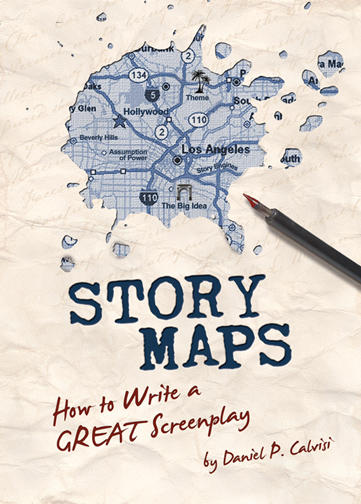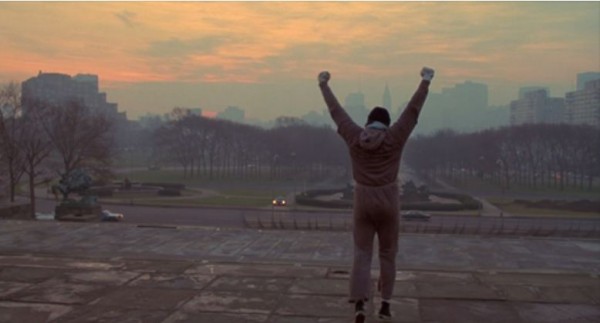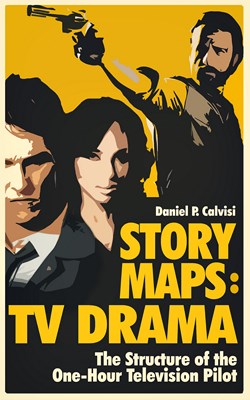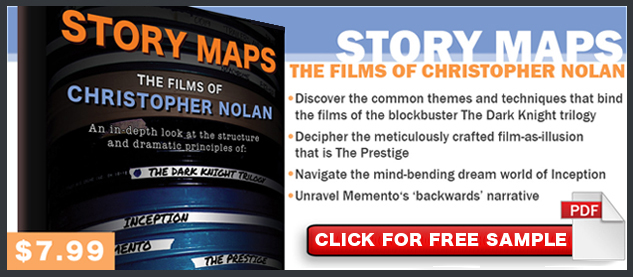A Story Map is my own method for structuring a screenplay by creating a simple yet powerful outline that contains the building blocks of your concept, characters and plot; the main dramatic elements and dramatic beats of the narrative and the order and desired page range of those beats, no matter the genre.
95% of great movies follow the Story Map.
I define it to the page. Because that’s how the pros do it and that’s exactly what I was looking for as a Senior Story Analyst working for major studios and production companies. If major films are cut in this way, then your script should be paced in this way. Believe it or not, it actually mattered to me if a script’s Inciting Incident fell on page 8-10 rather than 12-13. It made a big difference in the pacing of the first act and it showed me if this was a writer with the discipline to cut down on “setup” and suck me in or if this was a writer who failed to recognize the urgency of a movie narrative and the intense competition of the script marketplace. Which writer would you rather be?
…Rocky is an older film so the act breaks occur a bit later than in a modern movie, but all the other signpost beats occur in the exact Story Map page ranges as defined in detail in Story Maps: How to Write the GREAT Screenplay…
-
View a free sample Story Map for “Rocky:” Here
STORY MAPS SCREENWRITING
I find it tremendously helpful to look at produced films and note their elements in a Story Map, creating a quick-reference “library” of maps to compare and contrast. It is a tremendous help to study how professional screenwriters take their characters along their journey from point A to Z.
Download free Story Maps: The Shawshank Redemption, The Dark Knight, Zero Dark Thirty, Black Swan (partial map), The Wrestler (partial map), Scandal (TV pilot map).
If you work with me, I will provide you with my Story Maps e-books in PDF format (printable and works on all platforms), several sample Story Maps from successful Hollywood movies and a Worksheet to write your own Story Map. These materials will give you a clear, powerful road to success on both a craft and commercial level with your writing.
FORM, NOT FORMULA
Remember, the Story Map is not a formula, it is a story structure that is followed by almost every popular Hollywood film. It does not dictate your choices, it only provides a framework to hold your choices. This is not “cookie-cutter” filmmaking, unless you consider Sideways, Up, Transformers, The Hangover and Pretty Woman to be cut from the same mold, because they all utilize the Story Map!
When you use the Story Map, the screenplay is still undeniably yours, but it now comes wrapped in the shiny coating that covers pretty much all major studio movies and is recognized by every Agent, Manager and Producer in the business.
If you follow the Story Map and execute an active story in the proper page ranges, your script will FEEL like a modern hit movie.
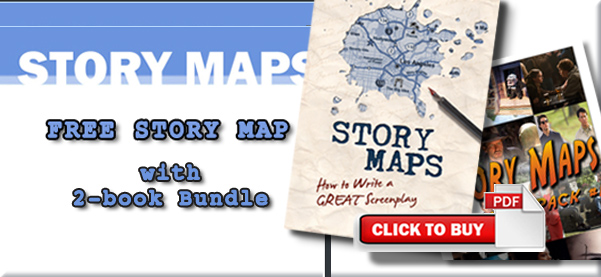 BASED ON INDUSTRY EXPERIENCE
BASED ON INDUSTRY EXPERIENCE
The best thing about Story Maps is that I not only go into more detail in defining these narrative steps than any other template you can buy, including the order in which they should fall in your script, but I also built this paradigm from working in the industry as a Senior Story Analyst for years where it was my job to read and evaluate hundreds of pieces of material. I took it further by spending years studying produced movies and comparing them to their screenplays and I compiled what is indisputably the building blocks of a GREAT SCREENPLAY which will someday make a GREAT MOVIE (if the planets align in Hollywood and your hard work, tenacity and a little luck all converge to get that coveted green light).
And if you’re a TV WRITER working on a pilot screenplay, I created the FIRST and BEST beat sheet template for television, detailed in my book Story Maps: TV DRAMA: The Structure of the One-Hour Television Pilot.
 To learn more about Story Maps, you can check out my Story Maps books or drop me a line at any time.
To learn more about Story Maps, you can check out my Story Maps books or drop me a line at any time.
Good Luck and Happy Writing,
Daniel Calvisi
Senior Story Analyst

